The most important console launch games

Ready for launch
In some respects, a consoles launch titles are among the most important that will ever grace its disc tray/slot. While a great game can highlight the potential of the new console, making you genuinely feel as if you're witnessing the future, a duff launch title (and there are plenty of them around) can make your new box of tricks seem like an embarrassing lump of plastic, mocking you from underneath your TV.
With the launch of the PS4 and Xbox One just around the corner, I thought Id take a look at some of the more important launch games from the past couple of decades. These aren't necessarily the best launch games ever, but they're the ones which either sold the potential of the console perfectly, or set the tone for the entire generation to come.
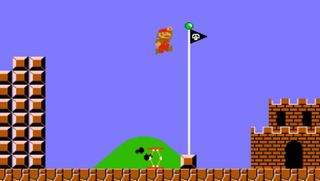
Super Mario Bros. (NES, 1985)
Where would gaming be without Mario? The tubby plumber stormed onto the scene some years before 1985 as a fairly oblique rip-off of Popeye (as Miyamoto couldnt afford the license), named Jumpman, in Donkey Kong. For the NES, though, Mario was the quintessential launch game; blending revolutionary graphics (for the time), creative gameplay, and a sense of endless replayability.
Most importantly, Mario was a hit with (largely) American audiences and helped the NES sell in abundance, cementing the sprightly Italian as both a gaming icon and the mascot of Nintendo. Super Mario Bros. was, and still is, a genre defining experience and a great example of getting it right first time. For new IPs such as Knack, Super Mario Bros. should highlight the importance of starting out strong.
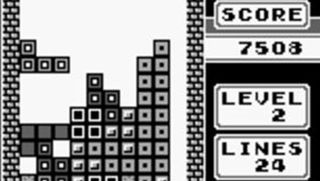
Tetris (Game Boy, 1989)
Portable gaming was a bit of novelty before the Game Boy came out. Although not specifically a Game Boy original (it was developed in 1984 and featured in arcades and on home computers before its handheld debut) Tetris wrote the rulebook on how to fit a genre around the hardware, and became an instant hit with 80s kids around the globe. Tellingly, Tetris is still as compulsive today as it was back then, and has been copied to within an inch of its life for more recent handheld devices--that's how well it fits 'gaming on the go'.
So not even an exclusive? Doesn't matter: it was a system seller. The opportunity to play it while riding a skateboard, listening to David Hasselhoff as the Berlin Wall fell around you was the defining moment of many peoples year in 1989 (Yeah, dude?). With the Xbox One and PS4 being so closely matched, can you think of any game that plays to the strengths of either console so perfectly? No, me neither.
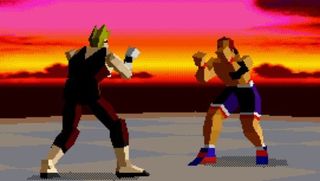
Virtua Fighter (Saturn, 1994)
These days, if you want the best graphics available for your games, you just need the beefiest of beefy PCs (to which the new consoles will be close). But in 1993, not even top-end home PCs could compare to arcade games, which had moved away from sprites and into the third dimension with triangular things called polygons. And the great thing about polygons is that they can be viewed from any angle, which made 1993's polygonal video games look EXACTLY LIKE REAL LIFE. Stop laughing, we were easily impressed, OK?
So it didnt matter that the first home conversion of Virtua Fighter was a bit shaky when it appeared on the Sega Saturn in '94/'95. The simple fact was you could now, for the first time ever, play a comparable version of a cutting-edge 3D arcade game without putting a coin in a slot. So while the cereal box fighters up there may look awful now, they represented a world of possibilities, the likes of which gamers living rooms had never seen before.
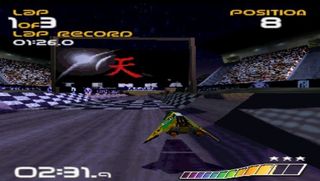
WipEout (PlayStation, 1995)
When Sony burst onto the scene in the mid-1990s, it came with an ethos. It was the plucky upstart that had sass and pizazz, and the energy of the disenfranchised youth (at least thats what the marketing department of the multi-billion dollar technology giant wanted us to think). It launched in the UK with the perfect game to marry up with this strategy: an edgy sci-fi racer that came packaged with dance music and neon lights everywhere. It was basically the gaming equivalent of driving a hovercraft through a rave. Sony even had WipEout pods at nightclubs.
In Europe, more than anywhere else, WipEout carried the PlayStation brand to the attention of older teens who had previously shrugged off gaming as something only children do (generally speaking) and, in a lot of cases, many of those older teens stuck with Sony. Hell, they're even thinking about purchasing a PS4 to suit their current playing habits. It may not be flashy lights and Orbital, but Drive Club could definitely learn a thing or two about style from the Psygnosis classic (well, before it was delayed anyway).
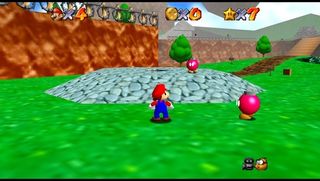
Super Mario 64 (N64, 1996)
Introducing the world to 3D platforming was one thing, but doing it well proved astoundingly difficult. Tech was advancing, but game design was lagging behind. However, when the familiar plains of the Mushroom Kingdom where recreated in glorious 3D, Super Mario 64 neatly took this difficult new tech and used it as a shining example of what the N64 was capable of. It introduced a number of factors now common place in most games such as a hub world, a reactive camera (which worked) and the revolutionary analogue control system--utterly vital if 3D gaming was to take off.
While others assumed it might be technically easier to create a new hero for 3D gaming, Nintendo applied the framework of a Super Mario game to ease players into the extra dimension. SM64 innovated, but was grounded by a familiar set of faces and rules. That's one of the true beauties of the game--it perfectly blended the old and new to create something utterly essential.
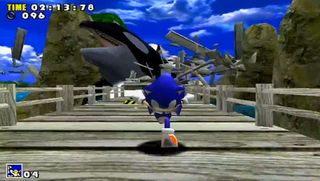
Sonic Adventure (Dreamcast, 1999)
When everybodys used to the graphics of PlayStation and N64, its easy prove your 128-bit new wonder machine is the hottest thing on the planet. All that Dreamcast needed was a graphical showcase and that job fell to Sonic Team. The poor hog mustve been chomping at the bit to show off after so many years in the wilderness. And in graphics at least, he delivered. Big time.
Riotously fast, sumptuously detailed and joyously colourful, Sonic Adventure was a showcase for Dreamcast and the perfect advertisement for the new generation of gaming. The killer whale bit has gone down in history as one of the most defining moments in all of gaming, coming about 10 minutes after you load the game up, to make sure everybody saw it. Admittedly, the game was full of bugs, but in 1999, everyone was sufficiently dazzled enough not to care. It just looked *that* good.
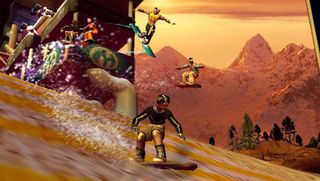
SSX (PS2, 2000)
Expectation was high when the PS2 was announced and Sony looked to EA to show off its new consoles graphical grunt. Among the annual sports titles and shooters was SSX, a colourful, fast and fun snowboarding game in the same vein as 1080 Snowboarding and, which had proved popular on the N64 two years earlier.
SSX wasnt just about beautiful, vibrant graphics--it played like a dream; with smooth controls, a solid trick system and enough modes and races to keep most of us busy until PS2's second wave arrived. It succeeded as launch title by not resting on its graphical laurels (which it had every right to do way back in the year 2000) and providing a deceptive amount of depth along with a killer soundtrack that made the PS2 feel 'cool'. Tellingly, time has been kind to SSX and, while looking slightly dated, it still plays as well as it did on launch day--the sign of a true great.
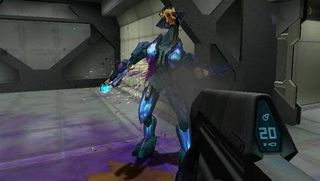
Halo (Xbox, 2001)
How best to announce your arrival on the scene than by redefining shooters? Halo managed this, and the Master Chief became a figure head for what started life as an ugly, unpopular console. The game was just astounding. Fresh, handsome and hugely entertaining, it was a bold statement of intent from Microsoft. In fact, it almost became a problem, as other early Xbox games struggled to match its popularity.
One of the main reasons Halo proved so successful was that it was pitched at exactly the right level, and captured Microsofts early 20s, largely American, target market perfectly. You have to wonder if Microsoft will ever find another launch game as perfectly matched for a console as Halo was to the original Xbox. Being one of the few new IPs for the Xbox One, Ryse: Son of Rome has a lot riding on its shoulders.
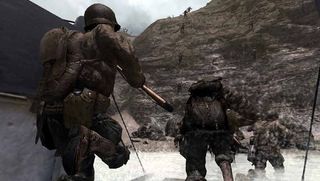
Call of Duty 2 (Xbox 360, 2005)
It was just four years after launching the original Xbox that Microsoft rolled out its vision of the future. The future was vast swathes of follow ups, sequels and yearly updates, with a smattering of half-assed original titles. Kameo: Elements of Power was the pick of the bunch. Yeah. However, those who picked up the relatively low-key Call of Duty 2, and had their new console connected to the internet, were in for a treat.
Call of Duty 2 featured an intense, slick and challenging single player campaign--fun, but nothing genuinely new. However, it was on multiplayer servers that the game really found its home. Back then online gaming was, and in some respects still is, the future of gaming, and Microsofts Xbox Live was a key part of that. COD 2 was the perfect game to not only kickstart XBL on the 360 generation, but to start reshaping the multiplayer shooter as a whole.
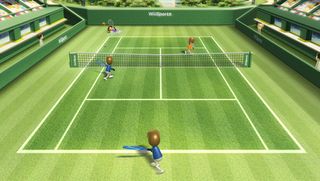
Wii Sports (Wii, 2006)
Nintendo had a massive potential problem on its hands when it released the Wii. It was one of the most revolutionary systems the world had ever seen, and the unique motion sensing controls were alien to a generation of gamers who had grown up pad in hand. Nintendo parried this potential alienation by packaging the Wii with a title that softened the edges of the Wiimotes motion control, making it feel both intuitive and accessible.
Those who were unafraid of waving their arms around like a maniac could dive right into The Legend of Zelda: Twilight Princess, but for those who had never played a motion controlled video game before (or indeed, any video game), Wii Sports was where it was at. It was the game that not only saw Wii accepted by gamers, but by casual players too--the effect of which is still felt in today's diverse gaming industry. Perhaps the recent decision by Microsoft to delay Kinect Sports Rivals will be a costly one for the future of Kinect 2.0.
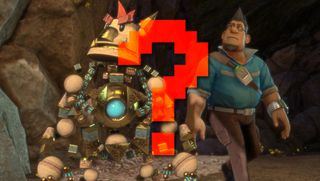
Knack to the future
So, what do you think? See any potential gems in either Microsoft or Sony's next-gen launch line-ups? Will Knack be the next Mario? Yeah, I doubt that very much too. Still, you can't blame Sony for trying. Don't worry, it'll be free on PS Plus within a year...
Want more news and info on next-gen? Here is Every Xbox One Game We Know About. More of a Sony type? Here is Every PS4 Game We Know About.

Richard is a freelance games journalist based in Derby, UK. He's currently working at Virgin Media, but writes about games in his spare time.
Most Popular


